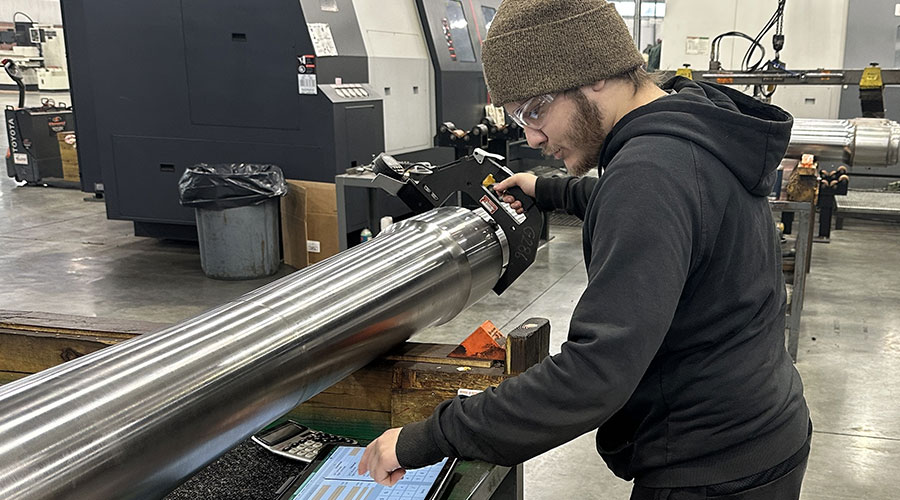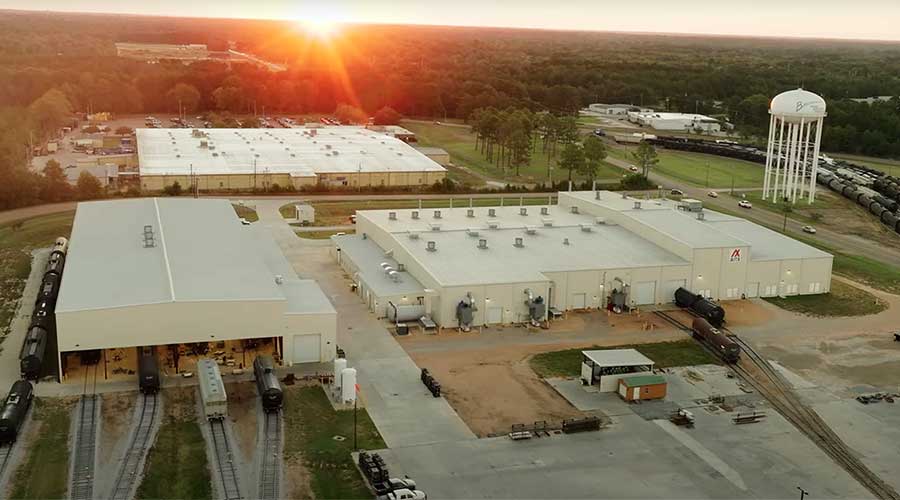Newsletter Sign Up
Stay updated on news, articles and information for the rail industry
Stay updated on news, articles and information for the rail industry
RAIL EMPLOYMENT & NOTICES
Rail News Home Mechanical
Rail News: Mechanical
Contact Progressive Railroading editorial staff.
February 2013
Rail News: Mechanical
New rail-car rule in Canada eyes emerging technologies
advertisement
By Jeff Stagl, Managing Editor
A new rail-car inspection and safety rule recently took effect in Canada that aims to accommodate the emergence of new or improved safety technologies.
Canada’s Minister of Transport, Infrastructure and Communities Denis Lebel approved the rule on Dec. 24, 2012, but it didn’t take effect until Feb. 22, 2013, so railroads had time to train all their affected employees, according to the Railway Association of Canada (RAC). The rule was submitted by the RAC on behalf of the rail industry.
The new “Railway Freight Car Inspection and Safety Rule” prescribes the minimum safety standards for freight cars operated by Canadian railroads that are subject to Transport Canada’s jurisdiction. The rule governs safety inspections when trains are put together, cars are added to trains and cars are interchanged, including pre-departure inspections; the certification and qualification of car inspectors and other employees; and corrective action reporting.
The rule also reviews the safety defects that prohibit a railroad from placing or continuing a car in service, including those involving wheels, axles, roller bearings and adaptors, plain bearings, trucks, car bodies, couplers and drawbars, and draft arrangements. For example, a wheel rim, flange, plate or hub area that has a crack or break, or an axle that has a crack or is bent or broken.
In addition, the rule addresses new car designs and technologies. A railroad can operate cars featuring “advanced technological improvements” if certain federal testing and operating procedures, and risk assessment requirements are met, according to the rule.
The rule now is better linked to other rule changes that have occurred over the past few years, RAC officials say.
“The approved rule is a revision and update of the existing rule that was last issued in 1994, and since then several changes have taken place in the railway industry and the rule had to be revised to reflect those changes,” said RAC Director of Mechanical Services Marcel Cedilotte in an email. “Some of the changes were necessary to harmonize some of the terminology in this rule with other existing rules, such as the train brake rules or locomotive rules.”
One major point in the revised rule is a stipulation that allows railroads to introduce new technology, such as to use roadside detecting devices to perform or complement the detection of some freight components, he said.
The Railway Freight Car Inspection and Safety Rule is the equivalent of the Federal Railroad Administration’s “Freight Car Safety Standard part 215,” said Cedilotte.
A new rail-car inspection and safety rule recently took effect in Canada that aims to accommodate the emergence of new or improved safety technologies.
Canada’s Minister of Transport, Infrastructure and Communities Denis Lebel approved the rule on Dec. 24, 2012, but it didn’t take effect until Feb. 22, 2013, so railroads had time to train all their affected employees, according to the Railway Association of Canada (RAC). The rule was submitted by the RAC on behalf of the rail industry.
The new “Railway Freight Car Inspection and Safety Rule” prescribes the minimum safety standards for freight cars operated by Canadian railroads that are subject to Transport Canada’s jurisdiction. The rule governs safety inspections when trains are put together, cars are added to trains and cars are interchanged, including pre-departure inspections; the certification and qualification of car inspectors and other employees; and corrective action reporting.
The rule also reviews the safety defects that prohibit a railroad from placing or continuing a car in service, including those involving wheels, axles, roller bearings and adaptors, plain bearings, trucks, car bodies, couplers and drawbars, and draft arrangements. For example, a wheel rim, flange, plate or hub area that has a crack or break, or an axle that has a crack or is bent or broken.
In addition, the rule addresses new car designs and technologies. A railroad can operate cars featuring “advanced technological improvements” if certain federal testing and operating procedures, and risk assessment requirements are met, according to the rule.
The rule now is better linked to other rule changes that have occurred over the past few years, RAC officials say.
“The approved rule is a revision and update of the existing rule that was last issued in 1994, and since then several changes have taken place in the railway industry and the rule had to be revised to reflect those changes,” said RAC Director of Mechanical Services Marcel Cedilotte in an email. “Some of the changes were necessary to harmonize some of the terminology in this rule with other existing rules, such as the train brake rules or locomotive rules.”
One major point in the revised rule is a stipulation that allows railroads to introduce new technology, such as to use roadside detecting devices to perform or complement the detection of some freight components, he said.
The Railway Freight Car Inspection and Safety Rule is the equivalent of the Federal Railroad Administration’s “Freight Car Safety Standard part 215,” said Cedilotte.
Keywords
Browse articles on Railway Association of Canada Transport Canada freight cars rail regulationContact Progressive Railroading editorial staff.


 2025 MOW Spending Report: Passenger-rail programs
2025 MOW Spending Report: Passenger-rail programs
 Gardner steps down as Amtrak CEO
Gardner steps down as Amtrak CEO
 Guest comment: Oliver Wyman’s David Hunt
Guest comment: Oliver Wyman’s David Hunt
 Women of Influence in Rail eBook
Women of Influence in Rail eBook
 railPrime
railPrime








